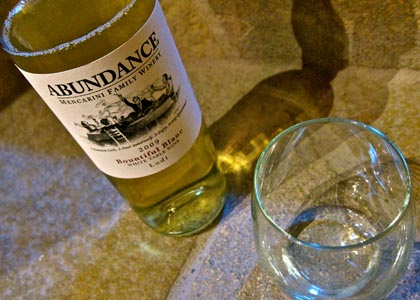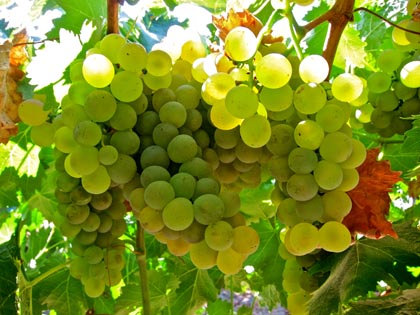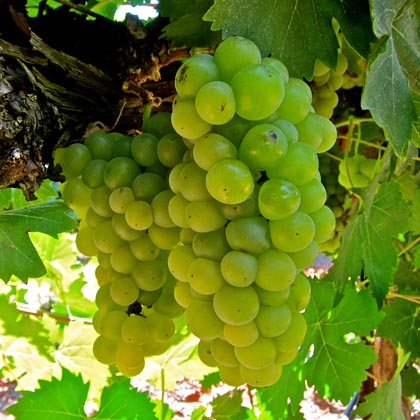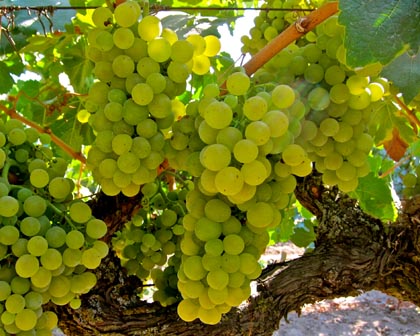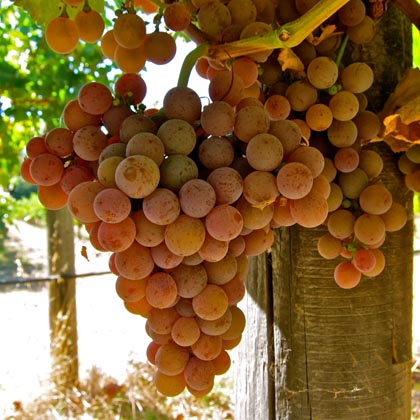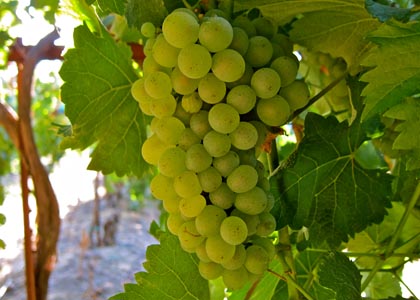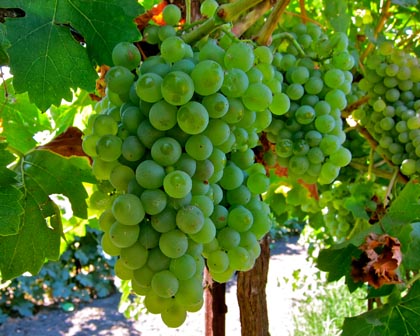Letters from Lodi
An insightful and objective look at viticulture and winemaking from the Lodi
Appellation and the growers and vintners behind these crafts. Told from the
perspective of multi-award winning wine journalist, Randy Caparoso.
Test your Lodi white wine grape knowledge (part 2)
Mystery grape #3 is the dominant Lodi grown grape in Abundance Vineyards' multi-award winning Bountiful Blanc
If you did well in part 1 of Test your Lodi white wine grape knowledge, here’s the skinny here: part 2 is a lot more challenging.
So just how big a Lodi wine lover are you? You’ll find out at the very end of this post, where you’ll find the answers.
Hints: Most of these grapes are commonly grown up and down the West Coast, from Santa Barbara to Walla Walla, but one of these is quite unique to Lodi (meaning, very little is grown outside Lodi, except in its country of origin). But all are members of Vitis vinifera, the classic European family of wine grapes. Ready, set? Guess away!
Vermentino, Bella Vigna-Delu 091311
Mystery grape #1
The grape in the photo above could be considered obscure everywhere except in the parts of the Mediterranean (primarily France’s Provence and Corsica, and Italy’s Sardinia) where it has long been appreciated for the refreshingly dry, light to medium bodied white wines it produces. Today, it is one of the grapes distinguishing Lodi unique among New World wine regions. These wines can be as aromatically complex as that of any grape: strong stony qualities mixed with lemony citrus as well as dried herby, lavender-like notes. The acidity is usually crisp, in the medium range, and silky textures usually allow the nuanced qualities in the nose to shine through in the flavors.
Mystery grape #2
Although the grape pictured above can be made into dry whites, it is far better known for its feathery light, easy, powerfully perfumed sweet wines — delicious with dessert, or drank as dessert. It’s grown all over California as well as throughout the Mediterranean (especially Italy). The fragrances tend to be flowery with musky spices, and the flavors juicy, almost fat, with fruitiness.
Mystery grape #3
Our third mystery grape, pictured above, is a cross of two varieties of Vitis vinifera developed by Dr. Harold Olmo of U.C. Davis over a period of thirty years, beginning in 1948. First embraced by Lodi growers in the late eighties, it has flourished as both a varietal white and blender to produce medium sweet white wines of gushy fruit qualities suggesting sweet melons, lush peaches, and mildly musky, exotic flower perfumes. Mildly lemony acidity adds to typically soft, easy drinking fruitiness on the palate.
Mystery grape #4
The reddish pink colored grape pictured above is a classic white wine vinifera (the color drops out with the skins) known for its ultra-intense spice perfume, strongly suggestive of lychee along with floral, peppery, musky and rose petal-like scents. Although it is often vinified with a slight sweetness (in Germany, California and Washington), the classic style of Alsace, France — also followed by many California specialists — is dry and often very full bodied (over 13% alcohol).
Mystery grape #5
The grape in the photo above once made a hugely popular varietal white wine in California, but its popularity waned with the advent of Chardonnay beginning in the mid-eighties. It remains a classic grape of France’s Loire River region, where it produces mostly demi-sec (“half dry,” or slightly sweet) style whites, although it also yields classic dry as well as sweet, late harvest style white wines. The varietal aroma is flowery and honeyed, often suggesting green melon, apple or pear.
Mystery grape #6
If you’re really up on the latest, you’ll recognize the grape above as one of the darlings of contemporary Rhône style wine lovers. It is the green skinned variant of a black skinned grape grown throughout Southern France and the entire West Coast. When bottled as a varietal on its own, it produces a fragrant, dry white wine of terrific fruitiness — suggesting white peach, apricot and tropical flowers; and sometimes honey, melon and quince — and silky, creamy textures and medium to full bodies.
Award winning clusters of mystery grape #3 at the Lodi Grape Festival
The mystery grapes:
1. Vermentino (photo: Vella Vigna Vineyard)
2. Muscat Canelli; a.k.a. Muscat Blanc (photo: Vino Farms)
3. Symphony (photo: Michael-David Vineyards)
4. Gewürztraminer (photo: Mokelumne Glen Vineyards)
5. Chenin Blanc (photo: Lewis Vineyard, Dancing Fox Winery)
6. Grenache Blanc (photo: Guard Ranch, Ripken Vineyards)
